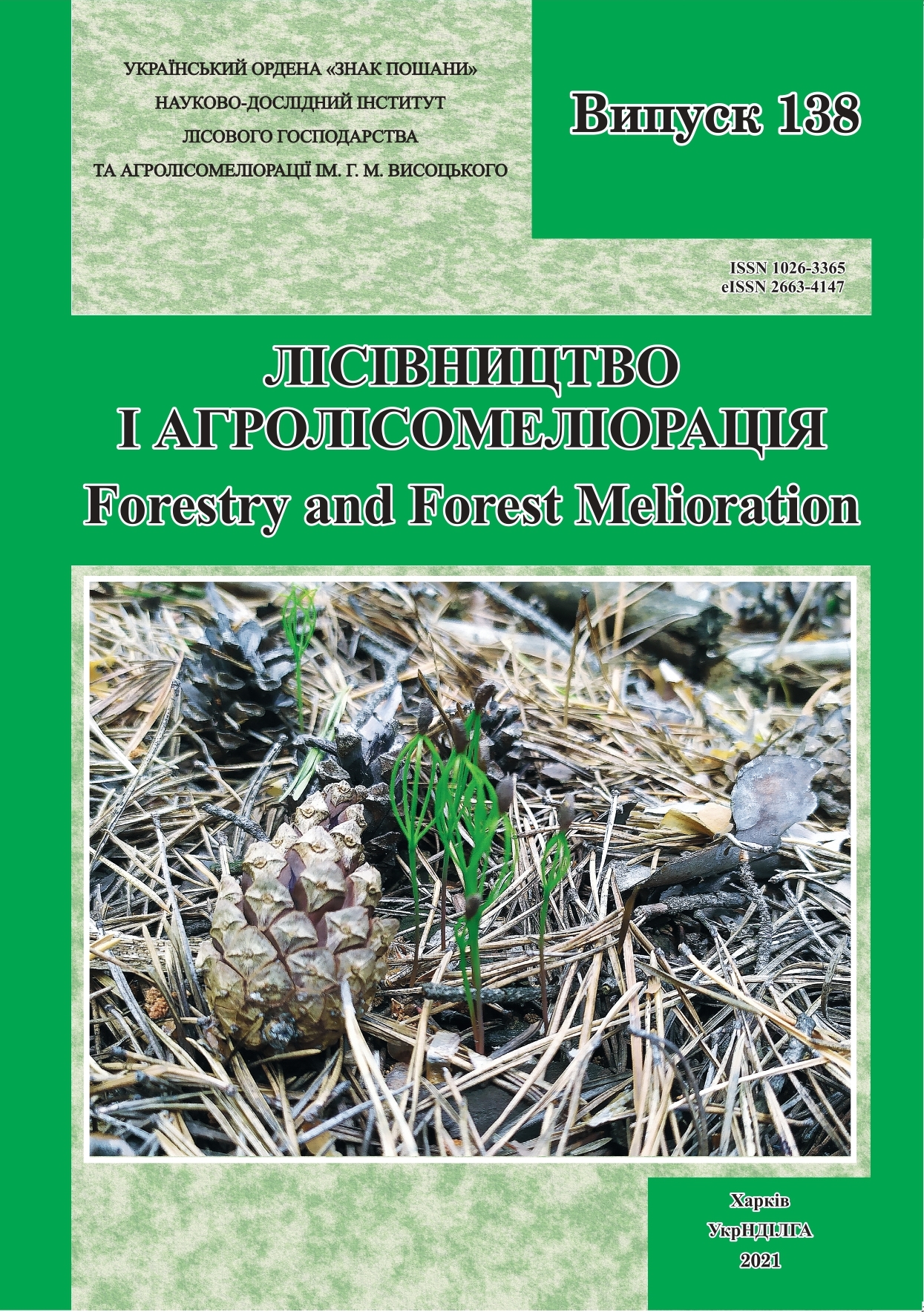Abstract
Introduction
The basis for Scots pine breeding should be the local selection material with regard to conservation and maintenance of genetic potential of high yielding tree plantations. Quite often, such plantations become infected by root rot. Thus, ecotypes resistant to such a dangerous pathogen are of great importance.
The aim of the study was to assess silvicultural and breeding characteristics of the plus stand of Scots pine, identify and select trees of high productivity of I and II selection categories, resistant to root rot, which can be candidates for plus trees.
Materials and Methods
In order to conserve the gene pool of tree species, scientists and foresters selected the genetic reserves and plus stands according to the Recommendations (Molotkov 1977), which need further study and usage. The most valuable high yielding stands were included to the plus ones after sample plots were established following the procedure of URIFFM (Volosyanchuk et al. 2003) and breeding assessment was made according to M. M.Veresin’s scale (1985). The condition of the trees was determined according to the URIFFM methodological recommendations by a 5-point scale (Volosyanchuk et al. 2003): 1 – excellent condition; 2 – good condition; 3 – satisfactory condition; 4 – unsatisfactory condition; 5 – tree died. Trees from the decline focus were additionally evaluated by the degree of resistance to pathogenic factors by the scale developed by I. M. Ustsky (1988). Trees of the II and III Kraft classes with dying tops, resin bleeding and smell of turpentine on the trunk were considered “unhealthy”, and trees of the I category without visible signs of the disease were called “conditionally resistant”.
The plus stands were selected based on the evaluation of the best pine stands, namely forest genetic reserves, permanent seed plantations and ordinary forest stands. In Rivne region, 17 plus stands of Scots pine occupy an area of 148.8 ha.
Results
The stand of natural origin at the age of 95 belongs to I growth class; the relative density of stocking of 0.6. It involves the following breeding categories: I and II – 17%, ІІІ – 53%, and ІV – 30%.
The trunks of the studied trees are of high quality. The mean height of self-pruning at the age of 95 makes 17.7 m; that index is 19.2 m in the trees of I and II breeding category and 16.6 m in the trees of ІV breeding category. Furthermore, 73 % of the trees have no trunk or crown faults, among them six plus trees are selected, including two new ones. It should be noted that 22 % of the trees are affected by root rot. Among them 3.5% are not smaller than the trees with the highest productivity. Of the 22% of the trees affected by root rot, 18.0% have resin bleeding on their trunks and 4.0 % are dying. The first plus tree is surrounded by three healthy trees and four affected by Heterobasidion annosum. The second plus tree is surrounded with six healthy trees and four affected by root rot. The height of the first tree exceeds the mean height of the stand by 25.7%; the mean stand diameter is exceeded by 32.4%. Thus, this tree was included into the first breeding category, the other one to the second.
Conclusions
The unaffected plus trees of I and II breeding categories should be used as genetic material for further research, seed and cutting harvesting in order to create seed orchards and increase pine stands’ resistance to root rot.

This work is licensed under a Creative Commons Attribution 4.0 International License.
